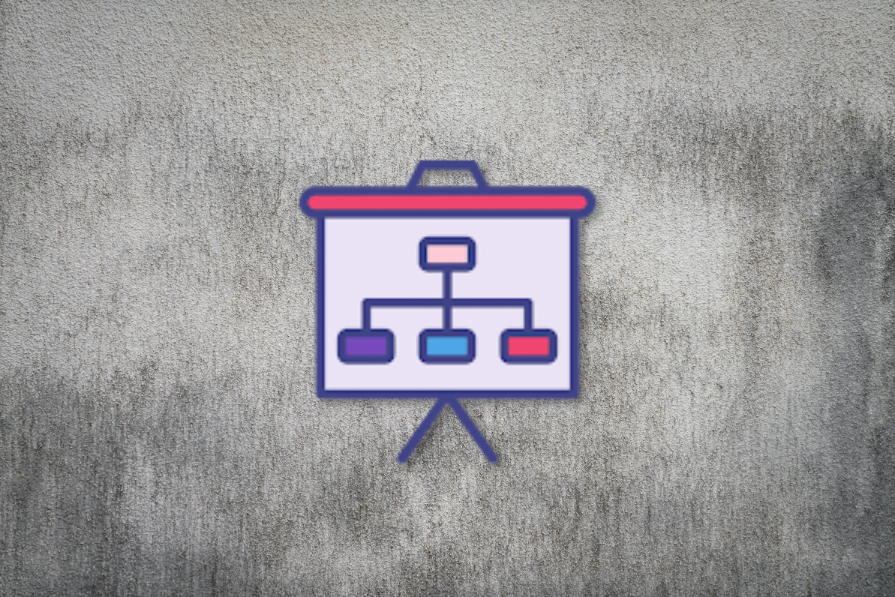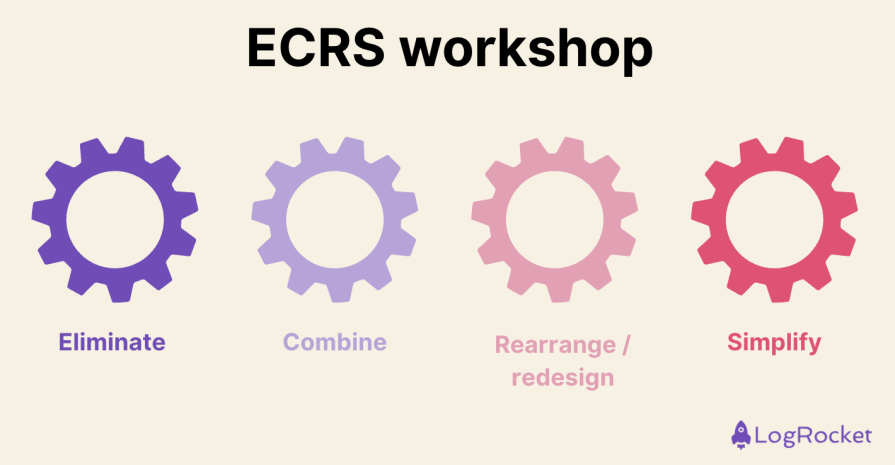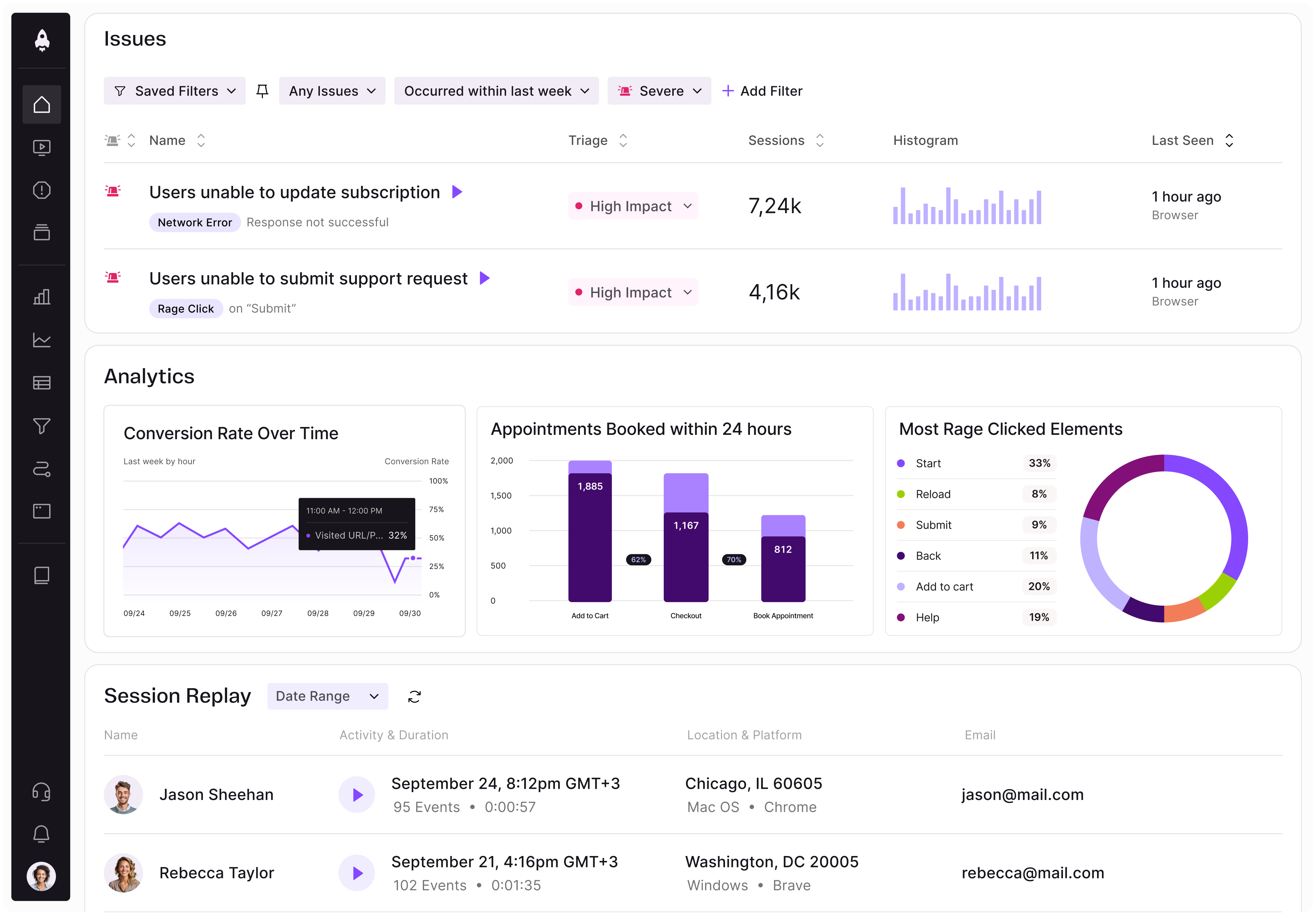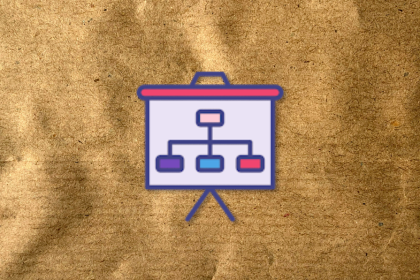Being a product manager often feels like juggling a dozen moving parts at once. Roadmaps, stakeholder requests, and daily fires create a whirlwind that can mask inefficiencies and unnecessary complexity. Without a deliberate approach to cutting through the chaos, small process bottlenecks and hidden dependencies quietly pile up, slowing teams down and consuming valuable resources.

Not long ago, we ran an ECRS (eliminate, combine, rearrange, simplify) workshop with our internal customers, engineering, and business teams. It showed me firsthand how structured analysis can uncover hidden waste and streamline processes. The process eliminated redundant steps, redesigned tricky workflows, and turned inefficiencies into clear, actionable improvements.
In this article, I’ll walk you through how I ran my team’s ECRS workshop and give you tips for bringing this method into your day-to-day work, applying its principles to help your team make smarter decisions and design workflows that actually scale.
Complexity is a hidden tax on time, resources, and focus in product management. Even carefully crafted roadmaps can give the illusion of clarity, but without regular prioritization and customer feedback, they can lead to wasted effort and solutions that don’t solve real problems.
As a PM, your responsibility isn’t just fast delivery — it’s identifying unnecessary processes, cutting complexity, and designing workflows that scale efficiently. Every “if condition” or workaround you add today can become a burden tomorrow. In planning or project analysis meetings, you’ll notice dependencies that complicate delivery.
For example, imagine a project where replatforming issues had to be addressed before the main work could begin, and deadlines were postponed due to domain dependencies. After gathering insights from team leaders, you quickly learn to eliminate unnecessary tasks.
This is where ECRS (eliminate, combine, rearrange, simplify) comes in. Like your KPIs, whether it’s reducing unit time, cutting costs, or saving headcount, ECRS is a practical tool to increase efficiency and productivity with limited resources:

By applying ECRS, you not only cut existing complexity but also develop a mindset to prevent future inefficiencies, ensuring your roadmaps and product processes truly create value.
If you blindly follow roadmaps, this article is for you. Stop and focus on simplification first: create “lite mode” options and eliminate waste. Otherwise, the complexity you’ve built will catch up to you.
As a product team, our goal with ECRS included:
PMs often define objectives and problems using standard product management methodologies, but some issues are hidden in small, dusty processes and can be hard to spot. Running an ECRS workshop helps you reveal these hidden inefficiencies.
In fast-growing tech companies, you may rely on lean, agile, or design thinking and wonder if such workshops are old-fashioned. They’re not. ECRS, originally a lean manufacturing method, adapts perfectly to modern product work.
Successful PMs think like a system designer, not just a task juggler. Methods like ECRS teach you to anticipate the complexities your requests may create, avoiding wasted time and resources. These workshops are particularly valuable for teaching both junior and senior PMs that following a fixed product backlog is not always an achievement.
Before you determine your team goals, consider these important tips:
Clear, actionable goals help your team focus on the right processes, measure impact effectively, and ensure that ECRS workshops lead to sustainable, real-world improvements.
Running an ECRS workshop might sound intimidating at first, but by breaking it into clear steps, you can systematically identify inefficiencies, engage your team, and uncover opportunities to streamline processes.
Let me walk you through the workshop steps I followed with my team. You can download a basic template for running an ECRS workshop here:
Following these steps and adapting them to your context ensures that ECRS workshops become a practical, repeatable tool to drive continuous improvement and measurable impact across your product operations.
As you navigate the ECRS process, keep the following questions in mind:
Running full-scale workshops every week can be costly and time-consuming. However, after conducting a few sessions, the ECRS way of thinking becomes part of your mindset. You don’t always need a formal workshop to apply for it.
Sprint retros, planning or grooming sessions, and new project meetings are perfect opportunities to embed ECRS thinking. You probably won’t have time to run through the full workshop, but you can still ask your team questions like:
You can maintain a key question list for each ECRS header (eliminate, combine, rearrange, simplify) and consciously select at least one question to bring up in daily standups, sprint reviews, or project meetings. Over time, these questions will become second nature, helping you spot inefficiencies and potential improvements faster.
ECRS can also be applied when reviewing OKRs, workflows, or feature requests. For example:
Asking the right questions consistently is one of the most powerful skills for a PM. It doesn’t just uncover inefficiencies, it encourages your team to think critically, question assumptions, and co-create simpler, more effective solutions.
Ultimately, the goal is to turn ECRS into a weekly habit that guides decision-making, reduces unnecessary complexity, and accelerates results.
After separating value-added, non-value-added, and action-needed processes, we mapped each one to the appropriate ECRS step: eliminate, combine, rearrange, or simplify. This helped us prioritize improvements and decide where to focus first.
Key wins:
These removals led to an estimated 15 headcount savings annually, reducing ongoing effort and freeing up team capacity for higher-value work.
Lessons learned:
Carrying forward:
The workshop showed that hands-on analysis combined with structured ECRS thinking doesn’t just improve processes, it also creates a culture of continuous improvement and smarter decision-making across the team.
Applying ECRS isn’t a one-off exercise, it’s a mindset, a lens through which you continuously evaluate every task, process, and project. From hands-on workshops to weekly standups, sprint retros, and OKR reviews, ECRS questions guide you and your team to challenge assumptions, eliminate waste, and streamline work without losing sight of your objectives.
As a PM, adopting this way of thinking will help you uncover hidden inefficiencies, reduce unnecessary complexity, and ensure that every step your team takes adds real value. Over time, it turns your workflow into a self-improving system, where decisions are guided not by habit or routine, but by clarity, efficiency, and impact.
Remember: complexity is invisible until it becomes a problem. Start asking the right questions today, and let ECRS be your guide to building products and processes that are simple, scalable, and successful.
Featured image source: IconScout

LogRocket identifies friction points in the user experience so you can make informed decisions about product and design changes that must happen to hit your goals.
With LogRocket, you can understand the scope of the issues affecting your product and prioritize the changes that need to be made. LogRocket simplifies workflows by allowing Engineering, Product, UX, and Design teams to work from the same data as you, eliminating any confusion about what needs to be done.
Get your teams on the same page — try LogRocket today.

A practical five minute revenue estimation method to help product managers compare ideas, drop low impact features, and prioritize smarter.

A practical guide for PMs who want to stop being bottlenecks, delegate smarter, and lead teams effectively with a clear ownership framework.

Stop letting unreliable data block features. Treat data as inventory to track quality, ownership, and ship with confidence.

Learn why slide decks slow teams down and explore better tools like whiteboards, PRDs, and prototypes to improve collaboration and alignment.